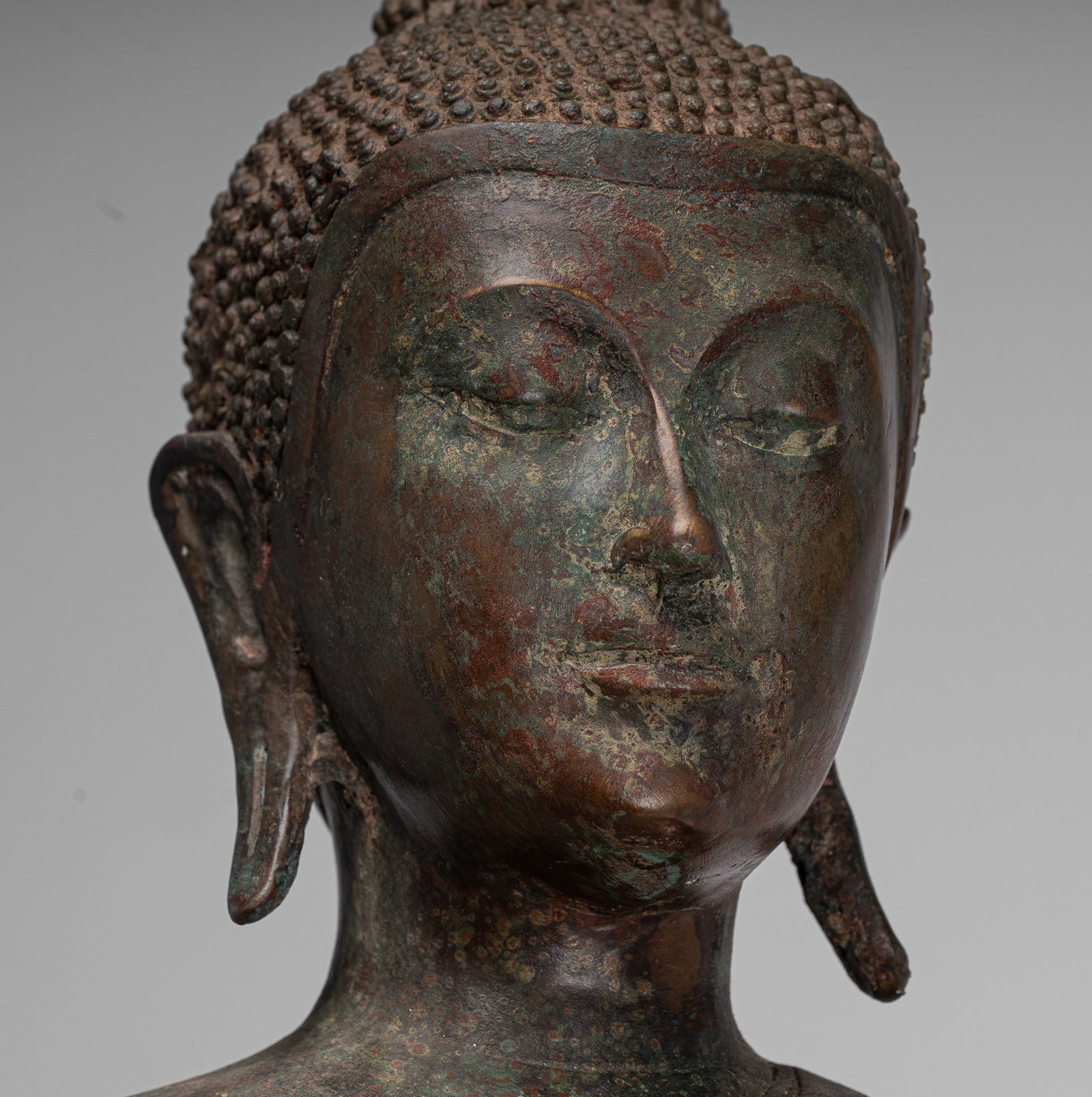
Exploring the Characteristics of U Thong Period Buddha Images in Thailand
Introduction
The U Thong period, spanning from the 13th to the 15th centuries, marked a significant era in Thai history and art. During this time, Thailand experienced the flourishing of Buddhist culture and the creation of exquisite Buddha images that reflected the spiritual and artistic aspirations of the period.
In this blog post, we delve into the characteristics of U Thong period Buddha images in Thailand, exploring their stylistic features, cultural significance, and enduring legacy.
Historical Context
The U Thong period, named after the ancient city of U Thong (modern-day Suphan Buri), was characterized by the emergence of the Sukhothai Kingdom and the consolidation of Theravada Buddhism as the dominant religion in Thailand. This period witnessed the construction of numerous temples and monasteries, as well as the production of magnificent Buddha images that served as focal points for religious devotion and artistic expression.
Stylistic Features
U Thong period Buddha images exhibit distinctive stylistic features that set them apart from earlier and later periods. These images often depict the Buddha seated in the meditation posture (dhyanasana) or the earth-touching gesture (bhumisparsa mudra), with a serene expression and a gentle smile. The Buddha's elongated face, gracefully arched eyebrows, and downcast eyes convey a sense of inner tranquility and spiritual depth.
Iconography and Symbolism
The iconography of U Thong period Buddha images reflects the influence of both Indian and local Thai artistic traditions. The Buddha is typically depicted wearing a monastic robe (sanghati) that drapes elegantly over his left shoulder, leaving the right shoulder exposed—a characteristic feature of Thai Buddha images. The hand gestures (mudras) and ornaments adorning the Buddha's body convey symbolic meanings related to enlightenment, compassion, and spiritual power.
Material and Technique
U Thong period Buddha images were crafted using a variety of materials, including bronze, stone, and stucco. Bronze casting was particularly popular during this period, allowing artisans to create intricate details and refine the surface texture of the images. Stone sculptures, carved from sandstone or laterite, also proliferated, showcasing the skill and craftsmanship of Thai artisans. Stucco images, molded from plaster and adorned with painted decorations, were commonly used for temple murals and decorative reliefs.
Cultural Significance
U Thong period Buddha images played a central role in the religious and cultural life of medieval Thailand. These images served as objects of veneration and meditation, inspiring devotion and spiritual contemplation among the faithful. They adorned temples, shrines, and monasteries, providing sacred spaces for religious rituals, ceremonies, and communal gatherings. U Thong period Buddha images also served as expressions of royal patronage and religious piety, symbolizing the close relationship between the monarchy and Buddhism in Thai society.
Legacy and Preservation
Despite the passage of time and the challenges of preservation, U Thong period Buddha images continue to be cherished as precious cultural treasures in Thailand. Many of these images are housed in museums, archaeological sites, and temple complexes across the country, where they are studied, admired, and revered by scholars, art enthusiasts, and devotees alike. Efforts to conserve and safeguard U Thong period Buddha images are ongoing, ensuring that future generations can continue to appreciate their beauty and significance.
Conclusion
The U Thong period Buddha images of Thailand stand as enduring symbols of artistic excellence, spiritual devotion, and cultural heritage. Through their elegant craftsmanship, symbolic iconography, and historical significance, these images offer insights into the religious and artistic achievements of medieval Thailand.
As we contemplate the characteristics of U Thong period Buddha images, may we gain a deeper appreciation for the rich cultural tapestry of Thai Buddhism and its profound impact on the spiritual life of the nation.





















